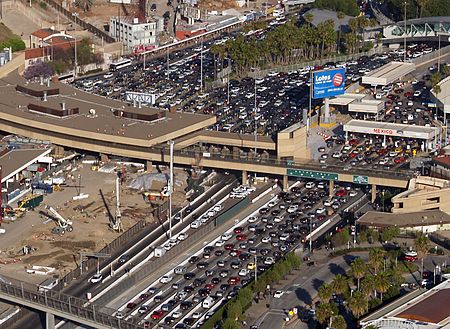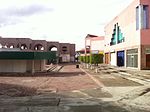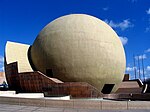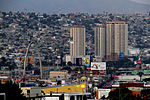San Ysidro Port of Entry
1906 establishments in CaliforniaBuildings and structures in San DiegoBuildings and structures in San Diego–TijuanaGeneral Services AdministrationInterstate 5 ... and 6 more
Mexico–United States border crossingsPorts of Entry in San Diego–TijuanaSan Diego metropolitan areaSouth Bay (San Diego County)Sustainable buildings in the United StatesUse mdy dates from June 2023

The San Ysidro Port of Entry (aka San Ysidro Land Port of Entry or San Ysidro LPOE) is the largest land border crossing between San Diego and Tijuana, and the fourth-busiest land border crossing in the world (second-busiest excluding the crossings between Mainland China and its two Special Administrative Regions) with 70,000 northbound vehicles and 20,000 northbound pedestrians crossing each day, in addition to southbound traffic. It connects Mexican Federal Highway 1 on the Mexican side with Interstate 5 on the American side. The San Ysidro Port of Entry is one of three ports of entry in the San Diego–Tijuana metropolitan region.
Excerpt from the Wikipedia article San Ysidro Port of Entry (License: CC BY-SA 3.0, Authors, Images).San Ysidro Port of Entry
Bus Lane, San Diego San Ysidro
Geographical coordinates (GPS) Address Nearby Places Show on map
Geographical coordinates (GPS)
| Latitude | Longitude |
|---|---|
| N 32.543333333333 ° | E -117.02972222222 ° |
Address
Bus Lane
Bus Lane
92173 San Diego, San Ysidro
California, United States
Open on Google Maps









